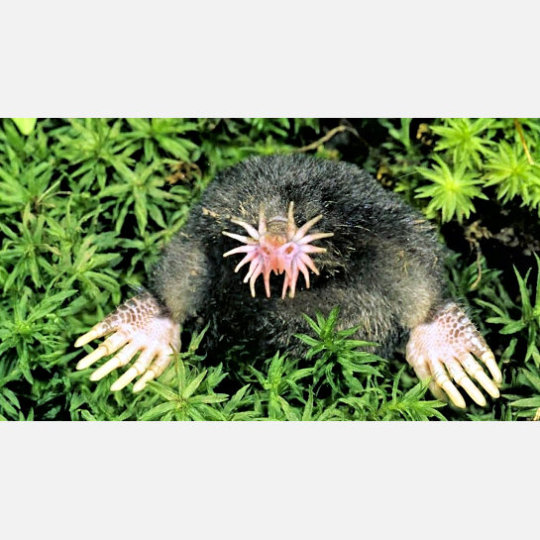#condylura
Text
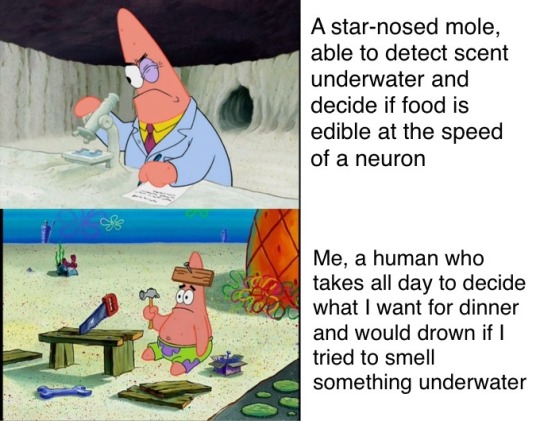
Haven’t seen enough species specific content in #mole interest so I am doing my part
5K notes
·
View notes
Text
Uncharismatic Fact of the Day
Nothing is faster than the star-nosed mole-- at least when it comes to reflexes. Using the specialized tentacles on its nose, a star-nosed mole can identify, capture, and consume individual food items in less than 130 milliseconds! That's three times faster than a driver reacts to a red light, and is thought to be the absolute limit at which neurons can fire.
You can read more about the star-nosed mole here!
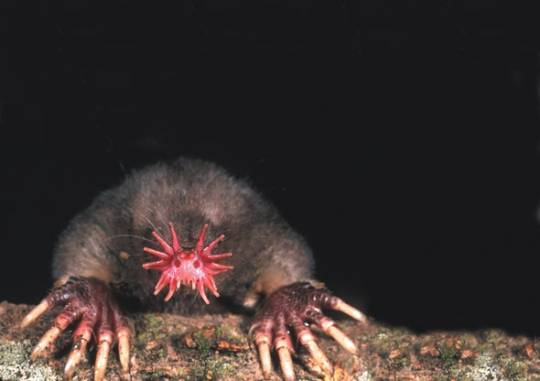
(Image: A star-nosed mole (Condylura cristata) by Kenneth Catania)
If you like what I do, consider leaving a tip or buying me a ko-fi!
159 notes
·
View notes
Text
[CM] Mammals - Prey
Third and final mammal post (for now), most of the animals here are taken by ClayClan as prey. They’re the size of or smaller than cats and generally safe to hunt, though there are exceptions. Below are translations for red-backed voles, bog lemmings, eastern chipmunks, and short-tailed shrews, plus several animals with the same name as base Clanmew.
Bats (general) - Fip*
There’s several bat species in ClayClan, buuuut I’m yet to look into them, so for now I’m just listing the general term. Bats aren’t hunted (they’re too fast and have too little meat) but are instead enjoyed as nimble predators in their own right. Someday I’ll make a bat expansion with more words!
Snowshoe hare (Lepus americanus) - Yywaya*
Cat-sized or slightly larger. The largest mammal that’s regularly hunted; hares make for a challenging but rewarding meal. They change color depending on the season, bearing a mottled brown coat in summer and a pure white one in winter. The god Chikik is believed to resemble a snowshoe hare!
Long-tailed weasel (Mustela frenata) - Morfaf*
Long snake-like body, very similar to an ermine. Both a hunter and the hunted - weasels compete with cats for small mammalian prey like mice and chipmunks, but are also killed to be eaten by the Clan.
Gray squirrel (Sciurus carolinensis) - Chakchak*
About a third of the size of a cat. These animals are found all over the forest, especially during fall, when they bury nuts for later retrieval. Hunted year-round as a hearty meal. Typically gray-and-white but sometimes all black!
Eastern chipmunk (Tamias striatus) - Twipip
A small, relatively non-challenging prey animal. Easy to find foraging on the ground in open woodland.
White-footed mouse (Peromyscus leucopus) - Nai*
White-footed mice are hunted often, but warriors must be careful to inspect the prey before transporting it for one important reason - white-footed mice are a favored host of larval deer ticks! Nobody wants to be the one responsible for bringing those back to camp...
Red-backed vole (Myodes rutilus) - Kakak
Common and easy to hunt, but not preferred due to their lack of meat. More valuable in winter when other prey becomes scarce.
Bog lemming (Synaptomys cooperi) - Wee
Rare! Sometimes hunted when found, but generally considered not worth it due to their small size.
Star-nosed mole (Condylura cristata) - Bosgo*
Found in shallow tunnels under wet soil. Hunted on occasion. Considered strange for their branching nose tentacles.
Short-tailed shrew (Blarina brevicauda) - Mwsswo (mwssaf*, owo*)
Hunted semi-frequently, but warriors must be careful to avoid getting bit, as short-tailed shrew saliva contains a toxin that causes unusually painful bites!
7 notes
·
View notes
Text
Animal of the Day!
Star-nosed Mole (Condylura cristata)
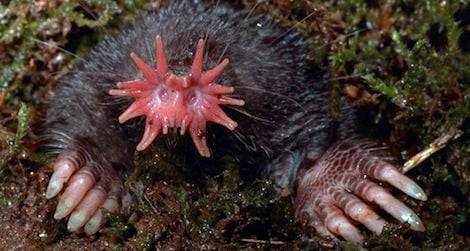
(Photo from Smithsonian Magazine)
Conservation Status- Least Concern
Habitat- Eastern North America
Size (Weight/Length)- 48 g; 12 cm
Diet- Worms; Insects; Snails; Small fish
Cool Facts- While star-nosed moles have eyes, they’re practically blind. Spending the majority of their lives underground, these moles have developed one of the most sensitive noses in the animal kingdom. With the fastest known sensory response of any mammal, star-nosed moles can detect if something is edible in only 8 milliseconds. It is also believed that they can sense seismic activity from miles away. Their snout can detect the electrical field of prey, mostly worms, to find its exact location in pitch darkness.
Rating- 11/10 (Shooting star? Nah, it’s a mole.)
#Animal of the day#Animals#Moles#Mammals#Monday#August 8#Star-nosed mole#biology#science#conservation#the more you know
47 notes
·
View notes
Text
North American moles include seven distinct species:
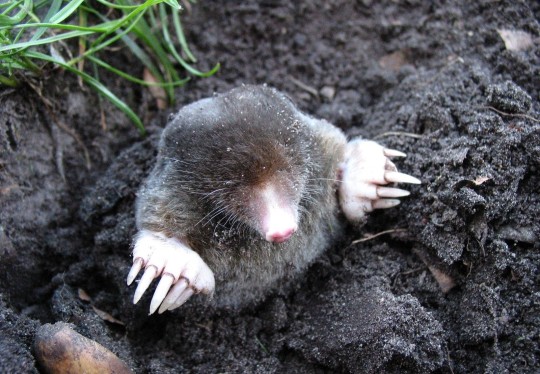
The Eastern Mole (Scalopus Aquaticus)
The Hairy-Tailed Mole (Parascalops Breweri)
The Star-Nosed Mole (Condylura Cristata)
The Broad-Footed Mole (Scapanus Latimanus)
The Towsend’s Mole (Scapanus Townsendii)
The Coast Mole (Scapanus Orarius)
American Shrew Mole (Neurotrichus Gibbsii)
3 notes
·
View notes
Text
The Ancestors
Before divine selection could take place and the Tetrarch could begin, the deities had to choose what would inhabit their world. They would need to be adaptable enough to survive the ecological shock, and able to form a functional ecosystem from the beginning, but the rest was up to the deities’ own inscrutable choices. The majority of colonists were sourced from Earth’s Holocene epoch, but a handful of the founders were inexplicably from various other time periods. To allow more ecologically complex organisms to survive colonization, the cherry-picked settlers were introduced in successive waves, each supporting the next. The first assisted in the final steps of terraforming, the hardiest microbes starting or regulating such vital processes as oxygenation and the carbon cycle. Each wave that followed increased in size and diversity, until the Tetrarch’s founding menagerie was complete. This eclectic sample of Earth would give rise to every oddity making up the Tetrarch’s biosphere, the primordial ancestors from which all of its life descends. What follows is a list of these ancestors at the time that the Tetrarch was ready to begin, not including the myriad unicellular organisms and viruses whose descendants are also important.
Plants and Algae
-Brazilian Waterweed (Egeria densa)
-Coconut Palm (Cocos nucifera)
-Erect Prickly Pear (Opuntia stricta)
-Grasses (~ 5 species)
-Hooker’s Chives (Allium hookeri)
-Leptosporangiate Ferns (~ 5 species)
-Lithops (~ 5 species)
-Mosses (~ 5 species)
-Macroscopic Algae (~ 25 species, including Undaria and Acetabularia)
-Southern Magnolia (Magnolia grandiflora)
-Spanish Moss (Tillandsia usneoides)
-Turtlegrass (Thalassia testudinum)
Vertebrates
-African Clawed Frog (Xenopus laevis)
-Banded Knifefish (Gymnotus carapo)
-Conodonts (~ 5 species)
-Hapalops sp.
-Longspined Porcupinefish (Diodon holocanthus)
-Pacific Viperfish (Chauliodus macouni)
-Spiny Softshell Turtle (Apalone spinifera)
-Star-Nosed Mole (Condylura cristata)
Arthropods
-Atlantic Horseshoe Crab (Limulus polyphemus)
-Coccus Soft Scales (~ 5 species)
-Copepods (~ 25 species)
-Earwigs (~ 5 species)
-Goose Barnacles (~ 5 species)
-Hoverflies (~ 5 species)
-Lacewings (~ 5 species)
-Mites (~ 25 species)
-Pseudoscorpions (~ 5 species)
-Rainbow Mantis Shrimp (Pseudosquilla ciliata)
-Springtails (~ 15 species)
-Water Fleas (~ 5 species)
Molluscs
-Applesnails (~ 5 species)
-Hippurites sp.
-Sea Angels (~ 5 species)
-Sea Butterflies (~ 5 species)
-Venus Clams (~ 5 species)
Other Animals
-Arrow Worms (~ 5 species)
-Brittle Stars (~ 5 species)
-Clitellate Worms (~ 15 species, including leeches, earthworms, and naidids)
-Demosponges (~ 10 species)
-Dugesia Planarians (~ 5 species)
-Nematodes (~ 300 species)
-Rotifers (~ 5 species)
-Tardigrades (~ 5 species)
-Velvet Worms (~ 5 species)
Fungi
-Collared Earthstar (Geastrum triplex)
-Lichens (~ 5 species)
-Molds (~ 50 species)
#biology#fantasy#ecology#speculative biology#spec evo#spec bio#speculative evolution#the tetrarch#seed world#worldbuilding#artificial selection
6 notes
·
View notes
Text
I think the range of names in my mains and sides is funny
Ullane Wistim: Random letters I thought sounded nice. Originally her last name was Xelois. I have no idea why I changed it but I’m glad I did.
Etuuya Vannyn: Again completely random and I just liked how it sounded. Also had a slightly different last name way back in their proto-concept, Vanier.
Thrixe Varzim: His name comes from the Latin name of a starfish, Ophiothrix fragilis, and a Portuguese town.
Crista Condyl: Straight up ganked from Condylura cristata, the Latin name of the star-nosed mole.
Maidel Juzuxt: Random, except Maidel actually means girl in Yiddish. I did not know this at the time, complete coincidence. Juzuxt is nonsense though and frankly I wish I’d chosen an easier to say last name for her, but too late now.
Gliese Benral: Like most of my early trolls, her first name comes from a star in her constellation. Benral too is a star flipped backwards - Arneb - with an l added to the end.
0 notes
Text

*This particular series is deemed for kids, please don’t comment otherwise*
~~~~~~~~~~~~~~~~~~~~~~~~~~~
(Maroon) *This is our Gel Pen style*
Traditional or Digital: Traditional
~~~~~~~~~~~~~~~~~~~~~~~~~~~
*Series: Mr. Jenkins’ Belly*
~~~~~~~~~~~~~~~~~~~~~~~~~~~
It’s Pride month and I waited till Pride month to post the love group.
Soo in this picture there’s this Polyamorous group consisting of; Andromeda, Cinthia, Willow, Yonil, and Blocky.
Cinthia wants Puffy to join the love group, but Puffy is Monogamous and Pansexual (hence the flag colors)
Cinthia, Willow, Yonil, Andromeda, and Blocky are also Pansexual.
~~~~~~~~~~~~~~~~~~~~~~~~~~~
*Characters in the picture:
Cinthia_Noodon (Pygis, Sky Pygis)
Puffy_Pluff (Cardinal, Colored-tipped Cardinal)
Yonil_Peep (Pipidae, Pipidae Hymenochirus)
Andromeda_Sol (Condylura, Constellation Condylura)
Willow_Waddle (Duck, Americana Duck)
Blocky_Ali (Badge, Blue Badger)
~~~~~~~~~~~~~~~~~~~~~~~~~~~
*28th Dimension English Dictionary:
1. Pygis/ n: A type of dragon that has a snake-like body and arms, but no legs and visible wings. They fly using magic and wind. They are closely related to Loongs. A huge difference between Loongs and Pygis is Loongs also have snake-like bodies without visible wings and fly using the same method, but Pygis don’t have legs.
2. Sky Pygis/ n: A type of Pygis. A Pygis is a type of dragon. They are white with blue markings. Sky Pygis are the size of a hump back whale and can caste fire and wind. Their figure is similar to a Chinese dragon only they have feathers at the end of their tail. This breed of Pygis originated from China.
3. Colored-tipped Cardinal/ n: A cardinal that originated from England, Scotland, and Ireland. Males are red and their wing tips can be any neon color. Females are any shade of brown and their wing tips are a non-neon color. Males look like this to appease the female cardinal.
4. Condylura: A mole that can feel with their nose, because of a hand like nose.
5. Constellation Condylura: Unlike other Condyluras the Constellation Condylura, has fur and a long tail with a poof. These Condyluras are either be blue, black or purple in color and can caste magic. They also have bright glowing star patterns on their fur. They have the ability to not need oxygen for a whole hour and can cast fire and lightning.
6. Blue Badger: A Badger that is very large and can withstand injuries more than a regular badger.
0 notes
Text
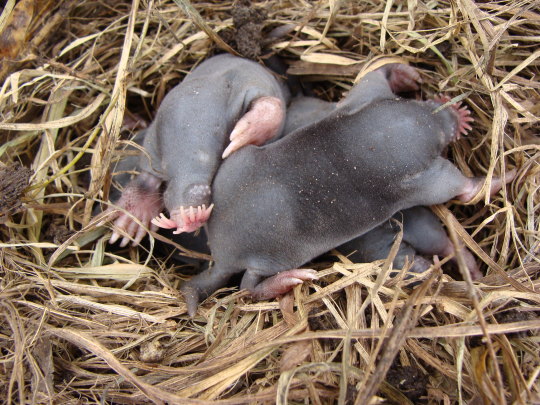
Star-nosed mole (Condylura cristata) pups, found in a compost heap where their mother had built her nest.
Photo by Hillbraith
#star nosed mole#condylura cristata#condylura#condylurini#scalopinae#talpidae#talpoidea#eulipotyphla#laurasiatheria#placentalia#mammalia#tetrapoda#vertebrata#chordata
987 notes
·
View notes
Photo
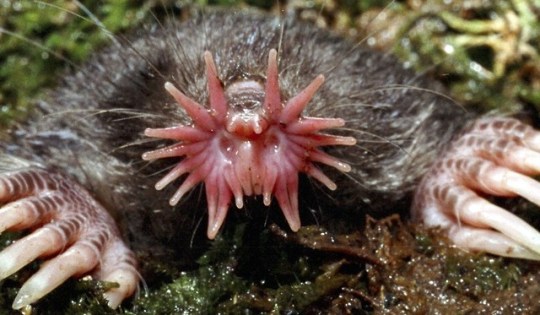
What in the world is this? It’s a star-nosed mole (Condylura cristata). Because they are nearly blind, these moles use the tentacles around their noses to help them find the earthworms and insects that they like to eat. Weird and wonderful, yes?
#Animals#star-nosed mole#mole#condylura#weird and wonderful#weird and wonderful animals#bizarre animals#odd animals#cute animals#burrowing#insectivore#did you know?#animal facts
35 notes
·
View notes
Photo
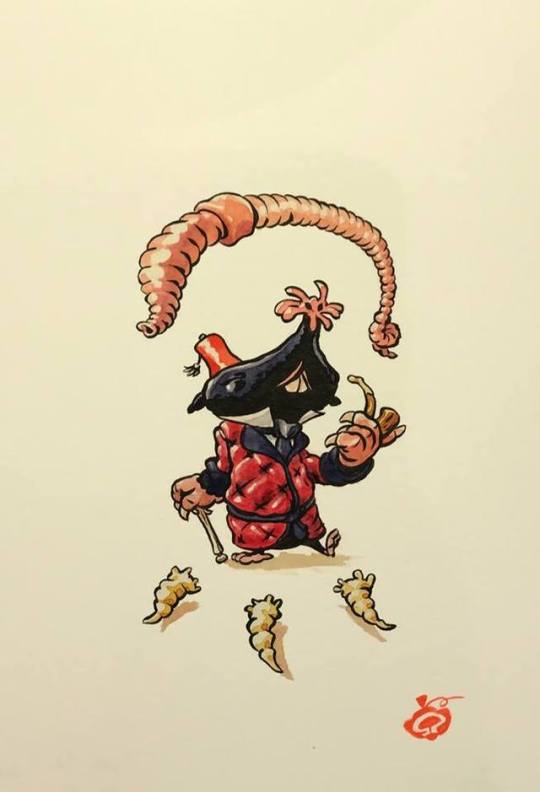
BLIND
In the Kingdom of the Blind, Kings are blind.
1 note
·
View note
Photo
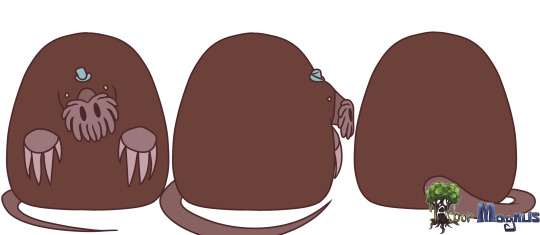
Eheheh.... littol...
7 notes
·
View notes
Photo
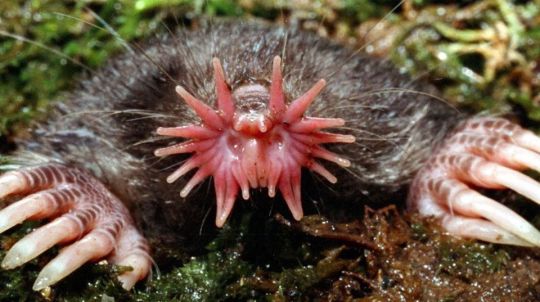
so lovely
1 note
·
View note
Photo
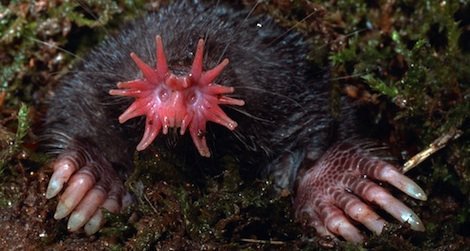

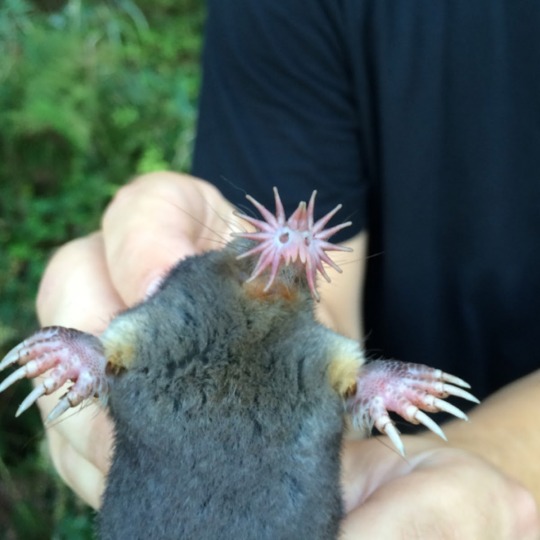
The Dig on the Star-nosed Mole
Native to eastern North America, the star-nosed mole (Condylura cristata) is a species of mole rarely seen. It spends most of its time underground in a network of tunnels that can grow up to 270 m long and often have entrances both on land and in water. They prefer wetlands with moist soil, and are excellent swimmers, although they have been found in drier grasslands. Unlike many other mole species, the star-nosed mole is active year-round and can sometimes be seen burrowing under snow or swimming in ice-filled water.
Despite their digging prowess, the star-nosed mole is rather small. Individuals rarely grow larger than 20 cm in length or weigh more than 75g. The forelimbs are larger than the hind limbs, and have large claws which it uses to dig. The sensitive pads are also useful for detecting prey. The tail can take up to 10% of C. cristata’s total body length, and in the winter it swells to 3 or 4 times its usual size to store fat. Males and females generally look the same; both sexes are about the same size, and both sport short, dense black coats. The eyes are visible and can detect light, but are small and often overlooked.
The most distinguishing feature of the star-nosed mole is, of course, its nose. Lacking functioning eyes, the nose and large front paws serve as C. cristata’s main sensory system. The nose has 22 fleshy tendrils that contain tiny, sensitive bumps called Eimer’s organs. The star-nosed mole has over 25,000 of these covering its tentacles-- more than any other mole-- and uses them to detect electrical signals and movement. In this way, the star-nosed is able to detect prey, primarily invertebrates, and avoid predators like birds of prey, foxes, mustelids, and large frogs. Another feature of C. cristata’s nose is that it’s shape enables it to smell under water. The mole blows a number of small bubbles and then quickly reinhales them, absorbing chemicals and scents from the surrounding water.
Most star-nosed moles are solitary and rarely encounter each other outside the breeding season. Mating begins in the early spring, and males and females will remain monogamous only through the year. After a pregnancy of only 45 days, females give birth to between 2 and 7 young. Babies are hairless, and their ears and tentacles don’t become functional for another two weeks. After a month young leave their parents, and become sexually mature at 10 months. It is thought that star-nosed moles can live 3 or 4 years old in the wild.
Conservation status: This species is classified as Least Concern by the IUCN. The primary threat is habitat loss, especially from deforestation, marsh draining, and mining.
Photos
Ken Catania
Greg LeClair
#star nosed mole#Eulipotyphla#Talpidae#new world moles#moles#mammals#subterranean fauna#subterranean mammals#wetlands#wetland mammals#deciduous forests#deciduous forest mammals#north america#eastern north america#biology#zoology#animal facts
281 notes
·
View notes
Photo
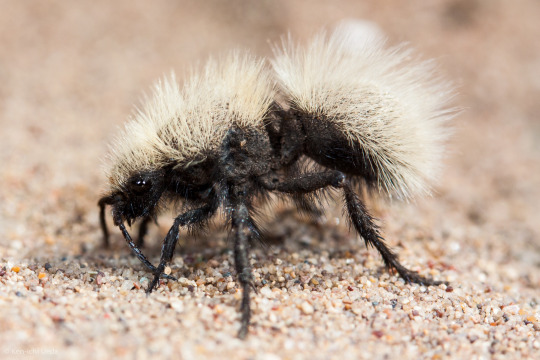
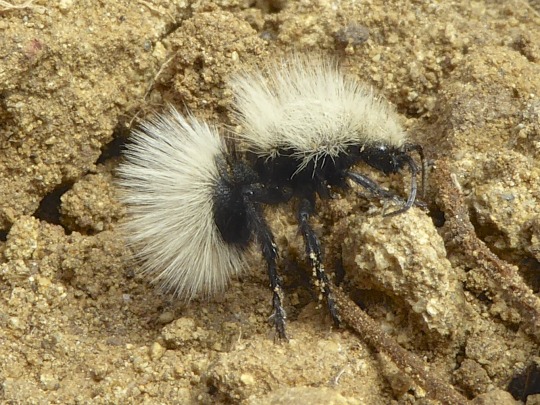
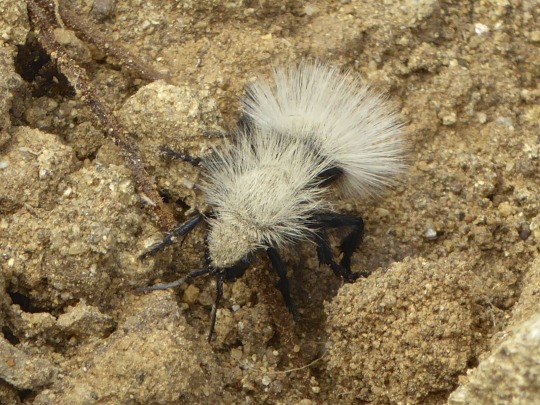

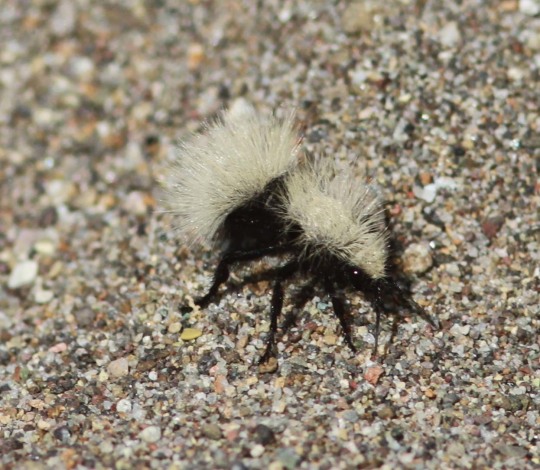
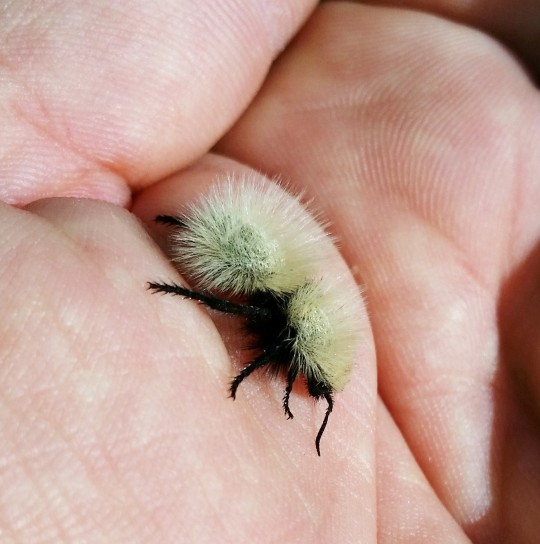


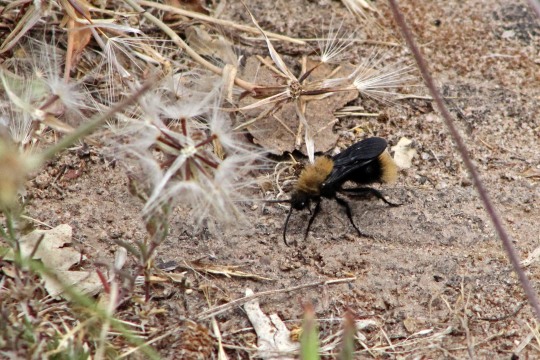
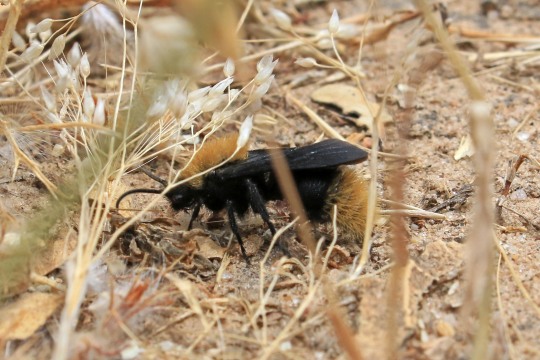
Sacken’s Velvet Ant, Dasymutilla sackenii, Mutillidae
Sacken’s velvet ant is not an ant, but a type of wasp. Females are wingless and resemble large, fuzzy ants; males look similar but have wings (photos 9-10). Velvet ants are known for their extremely painful sting, so it’s wise to avoid handling them with bare skin (as in photo above). This species is found mainly in California, but its range extends down into Baja.
Photo 1 by kueda, 2-3 by dlbowls, 4 by condylura, 5 by micrathene, 6 by kerry_ross, 7-8 by tempetoon, and 9-10 by edwardrooks
1K notes
·
View notes
